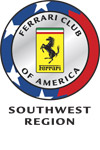
New Wind Tunnel for Ferrari
On April 15th in Maranello, President Luca di Montezemolo presented the plans for the new wind tunnel which will be used to produce the aerodynamic shapes of Ferrari road and competition cars of the twenty first century. Designed by the architect Renzo Piano and built at Maranello by the Dioguardi company, it is situated in an area housing new parts of the company. The new wind tunnel will be ready at the end of this year and operational in the first few months of 1997."Ferrari faced the necessity of having a wind tunnel capable of responding fully to the demanding needs of developing Formula 1 cars and Grand Tourers," said Montezemolo. "We chose therefore to use the most advanced technology at our disposal with an architectural structure that would constitute an innovative landmark at Maranello. We entrusted the project to Renzo Piano with the intention of showing, as we do with our cars, the high-technology approach that Ferrari adopts, linked to a coherent beauty of design. To achieve this we linked together three components: an architecture that reflects the Italian character in the relationship between form and function and a reflection of the cultural roots of the company; a company at the cutting edge of the construction business, not just in terms of quality but also in terms of its respect for the environment; and finally the town of Maranello. Ferrari wished to present it with a strong sign that identified the company with the area in which it was born and continues to grow."
The architect Piano explained that the wind tunnel was a very big project in which would evolve a sort of technical melting pot which would open the way to the new Ferrari. "Ferrari was born in the heart of the country," continued Piano. "Just as it did fifty years ago, the Ferrari of the year 2000 will respect its environment; frugality and craftsmanship mixed with sophisticated technical research and quality."
The specifically technical aspects of the installation will be undertaken by the specialist German company, TLT. The wind tunnel will be able to use 65 percent scale models of F1 cars(twice the size of the current one which has a one third scale capacity) with a rolling road speed of over 250 kmh, while full scale models can be run at up to 150 kmh. The platform which accommodates the models will be capable of rotation in order to simulate all types of set-up and movement: roll, yaw, pitch, steering and dynamic forces.
